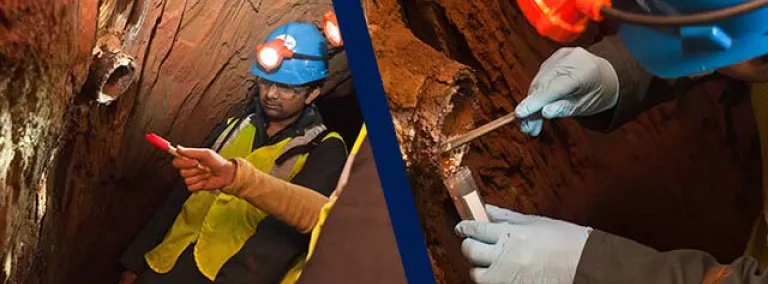SD Mines studies extreme life
The Sanford Lab underground is teeming with microscopic life.
The Sanford Lab underground is teeming with microscopic life. And Dr. Rajesh Sani has identified more than 9,000 microorganisms living in rocks, soil, water and even wood. His group has collected samples from levels all the way down to 5,000 feet, catalogued them, and written papers about them for nine years.
Now, Sani, an Associate Professor of Biology at the South Dakota School of Mines & Technology (SD Mines), and a handful of students and post docs are putting that knowledge to work on projects that use extremophiles to create biofuels, polymers, and even antibiotics.
"It's very important to know the microbiological diversity you have because once you understand that, you can target which ones you are interested in," Sani said.
Mohit Bibra and Aditi David, both Ph.D. students, and Dr. Saurabh Dhiman, a post doc, zeroed in on microbes that can help convert solid waste to biofuels. "If we can find something that is inexpensive, using substances that don't compete with food sources, that will be really good," Bibra said.
The process of converting solid waste usually takes several steps, including pretreatment, saccharification, fermentation, and separation of the product, but in the laboratory at SD Mines, everything goes into one reactor with the extremophiles and plant matter. So far, the team is seeing positive results. Although the waste is reduced significantly, there are still "leftovers." Sani and the team are hoping those leftovers will have a nitrogen source that can be used as fertilizer. "We are trying to develop zero-waste technology," Sani said.
One of the main problems with municipal solid waste is the plastic. Ph.D. student Jia Wang (his advisors are Dr. David Salem and Sani) is hoping to change that. Using a thermophile strain that thrives in high temperatures, Wang is working to develop polymers that can be used to create biodegradable plastic, starches, proteins and even latex. "This can provide many resources for industry," Wang said.
Ashley Preston, a senior in applied biological sciences, set her sights on medicine. "There's a major crisis going on with antibiotic resistance to drugs," Preston said. "We're hoping to find new antibiotics among these bacteria." During a trip to the 4850 Level, Ashley collected biofilms and old rotted wood found at 17 Ledge. "It's really humid. Perfect for good bacteria to grow."
Preston is successfully growing bacteria in the lab. The next step, she said, is to grow them against pathogens to see if they have any antibiotic properties. "We?ll know it's working if there's some inhibition of growth."
Sani praised the work his students and Dhiman have done so far. "They have been working very hard and, I hope, learning something. I'm very proud of them."
